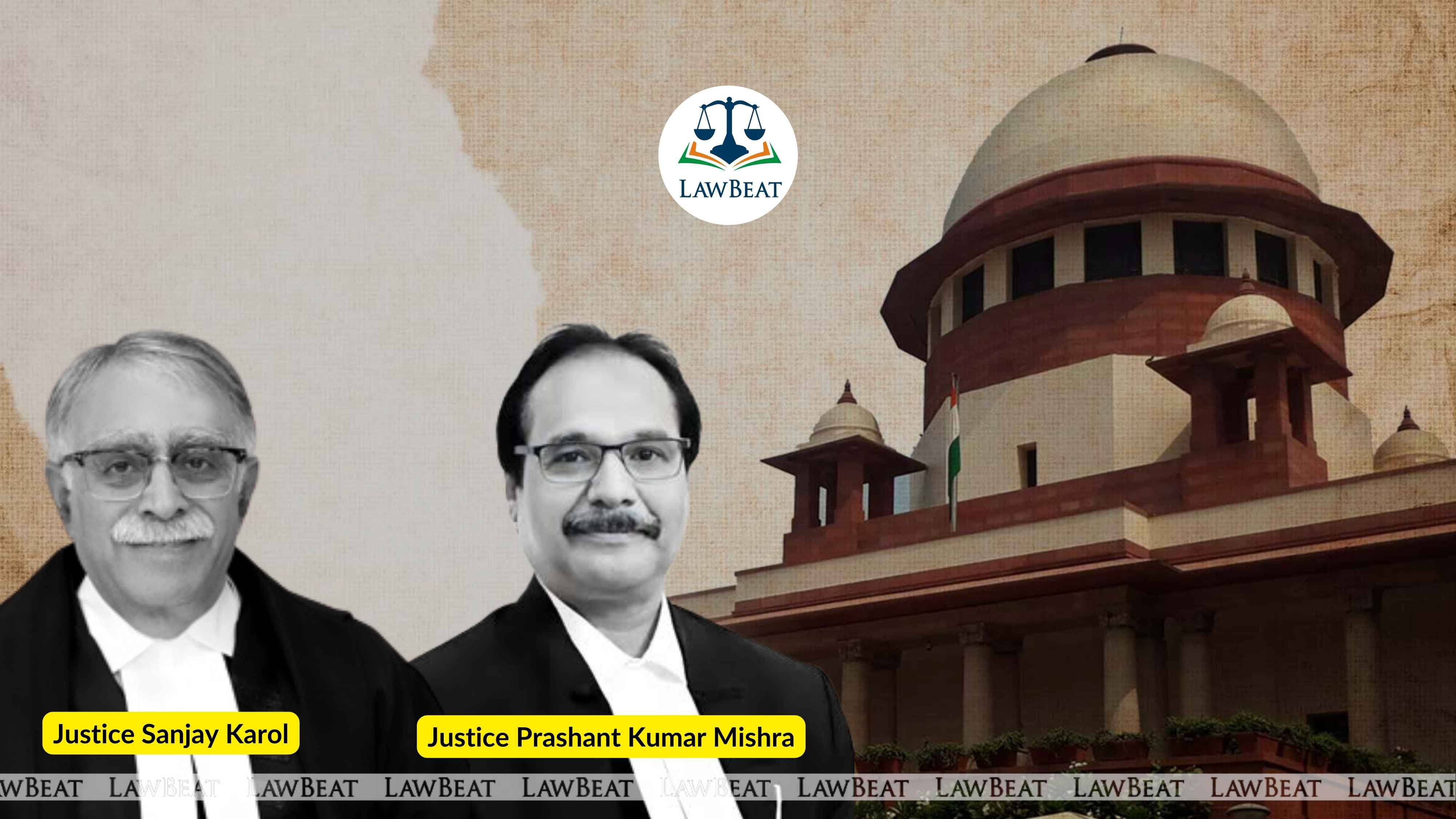Mere Allegation of Contributory Negligence Not Enough to Cut Compensation in MV Act Cases: SC

Setting aside the high court's 25% negligence attribution to the deceased, the bench restored the tribunal’s finding that the bus driver was solely responsible, enhancing compensation to Rs. 1.2 crore
The Supreme Court has said that a mere allegation simpliciter of contributory negligence would not be a ground to reduce the compensation for the family of the deceased under the Motor Vehicle Act.
A bench of Justices Sanjay Karol and Prashant Kumar Mishra raised the compensation from Rs 77,50,000 to Rs 1,20,84,925, while also emphasising that in compensation cases, the strict rules of evidence used in criminal trials do not apply. Instead, the standard of proof is based on the preponderance of probability.
As per the facts of the appeals filed by the family members, on June 6, 2016, the deceased, namely Boobalan, aged 38 years, was travelling on his motorcycle from Krupanidhi Junction towards Madivala. The driver of the BMTC (Bangalore Metropolitan Transport Corporation) bus (offending vehicle) collided with the deceased while driving in a rash and negligent manner, resulting in his death on the spot due to the grievous injuries sustained.
The appellants (dependents of the deceased) filed a claim petition before the tribunal seeking compensation of Rs 3,00,00,000, stating that the deceased was the only earning member of the family. He was working as an executive in the housekeeping department at Hotel Royal Orchid, Old Airport Road, Bengaluru, and earning up to Rs 70,000 per month.
The tribunal, by its order on December 12, 2017, after considering the last drawn salary of the deceased as Rs 62,725 per month, awarded the appellants an amount of Rs 75,97,060 along with interest at the rate of 9% per annum and held that the accident occurred due to the rash and negligent act of the driver of the BMTC bus.
Being aggrieved with the amount of compensation awarded, both parties filed an appeal before the high court.
The appellant challenged it on the ground that the tribunal incorrectly determined the monthly income of the deceased as Rs 62,725 per month, whereas the proven income as per the bank statement should be assessed at Rs 70,000 per month.
On the other hand, the respondent challenged the assessment on the ground that there was no negligence on the part of the driver of the bus. It also contended that instead of the notional income, the tribunal wrongly considered the income to the tune of Rs 62,725 as the deceased was not a permanent employee and that the interest at the rate of 9% was excessive.
The high court, by the impugned order of October 1, 2020, allowed the appeal and determined the contributory negligence at 75% on the driver of the bus and 25% on the deceased by relying upon the statements and documentary evidence on record.
It came to the conclusion that the accident occurred due to the rash and negligent driving of both the deceased and the driver of the offending vehicle, as both were driving at high speed. It further assessed the monthly income of the deceased as Rs 50,000 per month and awarded an enhanced amount of Rs 77,50,000 at the rate of 6% interest per annum.
Yet dissatisfied, the claimant-appellant approached the apex court. They raised a significant point of contention that the high court wrongly assessed the contributory negligence of the deceased to the extent of 25%.
After examining the matter, the bench said, "We are unable to agree with the view taken by the High Court on the 25% contributory negligence of the deceased and 75% upon the driver of the bus. We find ourselves to agree with the view taken by the Tribunal on this issue."
The court said the tribunal rightly, after considering the evidence on record and perusing the spot mahazar, came to the conclusion that there wasn’t any sufficient evidence on record indicating that the accident occurred due to negligent driving on the part of the deceased. After considering the oral evidence, it held that the cause of the accident was the rash and negligent driving solely on the part of the offending vehicle.
"Thus, in our considered view, the contributory negligence taken by the High Court at 25% of the deceased is erroneous," the bench said.
The court adverted to the principles laid down in Jiju Kuruvila Vs Kunjujamma Mohan (2013), where it was held that in the absence of any direct or corroborative evidence on record, it cannot be assumed that the accident occurred due to the rash and negligent driving of both vehicles. This exposition came to be followed in Kumari Kiran Vs Sajjan Singh and Ors (2015), the court pointed out.
"In the present case, therefore, on an allegation simpliciter, it cannot be presumed that the accident occurred due to rash and negligent driving of both vehicles, for having driven at high speed," the bench said.
It is settled law that under the Motor Vehicle Act, 1988, in compensation cases, the strict rules of evidence used in criminal trials do not apply. Instead, the standard of proof is based on the preponderance of probability, the bench pointed out.
"In our considered view, the High Court was not justified in assessing the monthly income of the deceased at Rs 50,000, as this amount is relatively low, particularly in the background of the fact that the accident occurred on June 6, 2016 and the Tribunal has evidently recorded that the last drawn salary of the deceased as per Pay Slip to be Rs 62,725 per month. Therefore, we affirm the findings of the Tribunal assessing the income of the deceased to be Rs 62,725 per month," the bench said.
Allowing the appeal, the court computed the overall compensation by enhancing it to Rs 1,20,84,925.
Case Title: Prabhavathi & Ors Vs The Managing Director, Bangalore Metropolitan Transport Corporation
